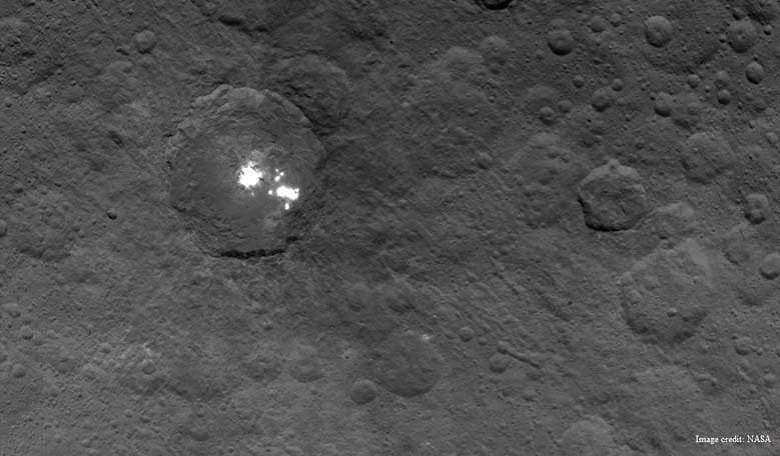Dawn, the NASA robot probe, has discovered a series of bright spots on Ceres. This is a good reminder of how little we know about our own solar system so far.
Ceres, named after the Roman goddess of agriculture, holds the title of being the largest body in the asteroid belt and is designated a dwarf planet. It is located 250 million miles away from the sun.
For the first time in the history of human space exploration, a robot probe has made it all the way to Ceres back in March of this year. What it has discovered has already become fodder for eager conspiracy theorists.
There are several bright spots on Ceres, and so far, we have no idea as how they got there. Theories range from the possibility of highly reflective materials on the surface, containing ice or salts. So far, NASA says that the possible cryovolcanic origin of the bright spots is not a very likely theory.
The fact that some of the spots appear to have a somewhat pyramid-like shape has certainly gotten some people excited about the possibility of alien life having once dwelled on Ceres.
While that scenario is highly unlikely, the mystery of Ceres’ bright spots drives home the point that even as we contemplate the possibility of interstellar voyages , our own solar system is still in many ways uncharted territory for humanity.
And it’s not as if Ceres hasn’t surprised scientists before. In the beginning of 2014, for example, we detected emissions of water vapor from several areas on Ceres’ surface. Such emissions are typically associated with comets – not dwarf planets.
Ceres represents what NPR’s Adam Frank has beautifully referred to as “the agony of ignorance” – that feeling when we encounter the possibility of an answer that nevertheless lies outside our reach.
Then of course there is the fact that the more answers we get, the more new questions end up arising. The Dawn mission is, once again, the perfect example of that. We saw the surface of a mysterious dwarf planet – but seeing just isn’t enough. Now we long to figure out why Ceres looks the way it does.
And while shiny alien pyramids are highly unlikely, the one thing that is obvious is that our own backyard, the solar system, is still an undiscovered country as far as humanity is concerned.











